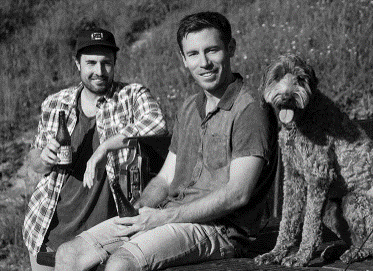What did you do before creating your gin and distillery?
I (Chris) was a cheesemaker prior to distilling and an Accountant before that which I am back doing again. Simon is a Dentist. Both working part time allows us to have someone in the distillery most days, and dramatically increases our level of work stories. What made you decide to create your gin and distillery, and what's the inspiration behind Indiginous Gin? Me and Simon were addicted hobby beer brewers and once we fine-tuned the art we decided to turn to Gin since that was what was becoming popular at the time in NZ and I saw the huge growth in the UK while living in London between 2012 and 2016. All we really wanted to do was to create premium products we are proud of and have a hell of a lot of fun while doing it. The inspiration for Indiginous Gin come from our first attempt at distilling where we were making our alcohol from scratch. We were given a botanicals recipe from a home brewer and I read Simon the recipe totally wrong. The gin come out very heavy in cinnamon and citrus (due to distilling the whole fruit rather than just peels). We were a little embarrassed for people to try it but it was such a massive hit in the local BBQ scene that summer that we could only admit to the errors. Fair to say not a huge amount has changed. We refined our recipe and yeasts somewhat, but all our processes and the original botanicals are still in the final product today. What's the distillery like and can you tell us about the distillation process and botanicals? We were lucky enough to meet Carl, the original owner of one of New Zealand’s most iconic craft breweries, Tuatara. He kindly offered us a place to set up in the original brewery in the Reikiorangi Valley. It is small but all consents and natural resources were still there which was a huge leg up for the lads. As mentioned most of our processes are still in place from our first trial, so we make 90% of all our base alcohol we use for Indiginous. Through selective yeast inspired by our beer brewing days, our base spirit creates our first layer of flavour of a fruity neutral spirit. This also helps create the ‘mouth feel’ that many of our customers comment on. We do use some flavourless base alcohol in the gin runs, around 10-15%, to help boost our yields and keep up with demand. All botanicals we use are for a reason and our aim is for the consumer to taste every one at some point in the journey. Juniper and coriander are still the heart of the gin. Manuka hydrosol, which we get as a biproduct from a Manuka oils distiller, creates a leafy earthiness to mellow out the bitterness of juniper. Whole oranges and lemons are used to create the citrus nose and assist the fruity base. The cinnamon, liquorice and Orris root create the sweet lingering spice finish. What have been the biggest challenges and achievements so far? We have recently launched so the biggest challenges have been finding quality suppliers for the quality ingredients when living so far away on the map. But my favourite story has been meeting and building relationships with the people who go out of their way to lend a hand for no other reason than to see us to succeed. How would you describe Indiginous Gin in 3 words? Bloody good Gin! What's your favourite way to drink Indiginous Gin? Due to the layers of flavour, straight on crushed ice with a piece of orange and mint, or with equal parts gin, soda water and tonic. What gins would you always have on your gin shelf (other than your own of course!) I am a big fan of a certain style of gin - New Zealand gins Juno from Taranaki and Little Biddy from Reefton, and MGC from Melbourne, are always a treat to come home to. What's next for Indiginous Gin - any exciting plans? We are about to launch a rhubarb and raspberry gin - our first non-dry gin, and looking to the aged liqueur market. But we mainly just want to promote the craft of gin in New Zealand, meet interesting people and have a hell of a lot of fun and yarns along the way. Also Read...
Comments are closed.
|


 RSS Feed
RSS Feed


